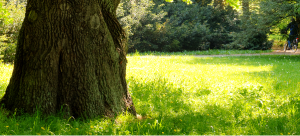 Trees, just like any other plant, can experience problems. If you have trees in your garden, then it’s a good idea to inspect them from time to see if it’s in good condition. In this article, we take a look at three of the most common problems with trees in the UK (and around the world).
Trees, just like any other plant, can experience problems. If you have trees in your garden, then it’s a good idea to inspect them from time to see if it’s in good condition. In this article, we take a look at three of the most common problems with trees in the UK (and around the world).
- Honey fungus
This is a common perennial issue which requires removal of both the tree and the stump. The good news is that you won’t have to remove the surrounding plants because it is very likely that they will remain unaffected. This specific fungus gets inside the tree through wounds. In most cases, it causes problems in trees that are highly susceptible. If you want to find out whether your tree has this disease, check a part of the root by removing the bark carefully. If you notice a white creamy sheet of mycelium and you smell a scent that reminds you of mushrooms above the woody tissues and right under the bark, then your tree is affected by honey fungus. There are some trees that don’t experience honey fungus issues including cercis, catalpas, beeches and oaks.
- Aphid attack
If you notice darkening foliage and dieback in your coniferous hedge or leylandii, it is probably experiencing an aphid attack. It is not recommended to cut parts of the tree. In most cases, cut hedges lead to a worse situation than the ones treated to a single cut.
- Powdery mildew
This issue is typical for the summer period, especially when it comes to catalpas, maples, and oaks. There are many different reasons why powdery mildew occurs and some of these reasons are closely related to specific plants. However, the most common causes of this problem are inadequate air circulation and dryness especially at the roots of the tree. Staying away from feeds rich in nitrogen and mulching should solve the issue.
If the trees in your garden are suffering with problems and you’re not sure what the issue is, then please get in touch. We would be happy to help.








